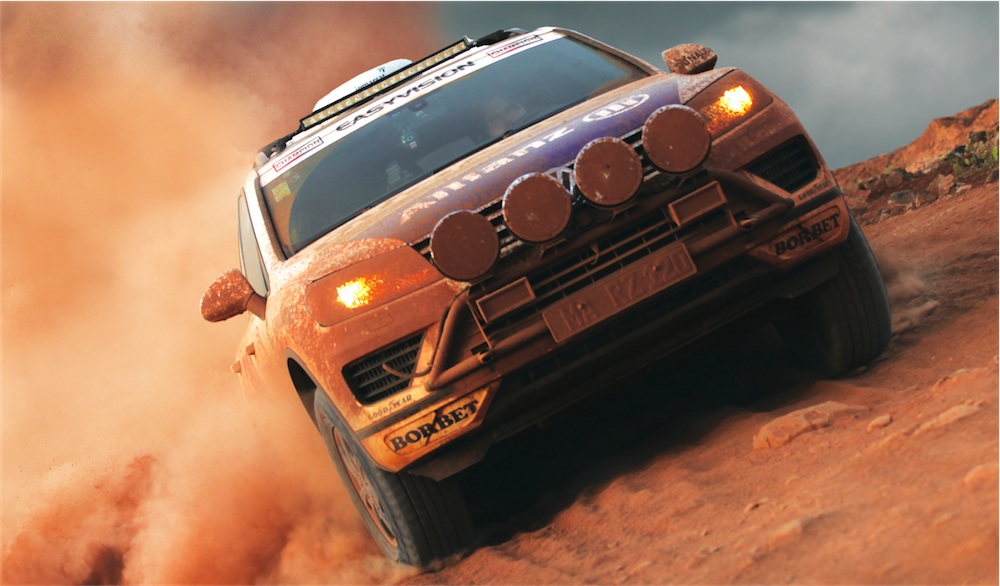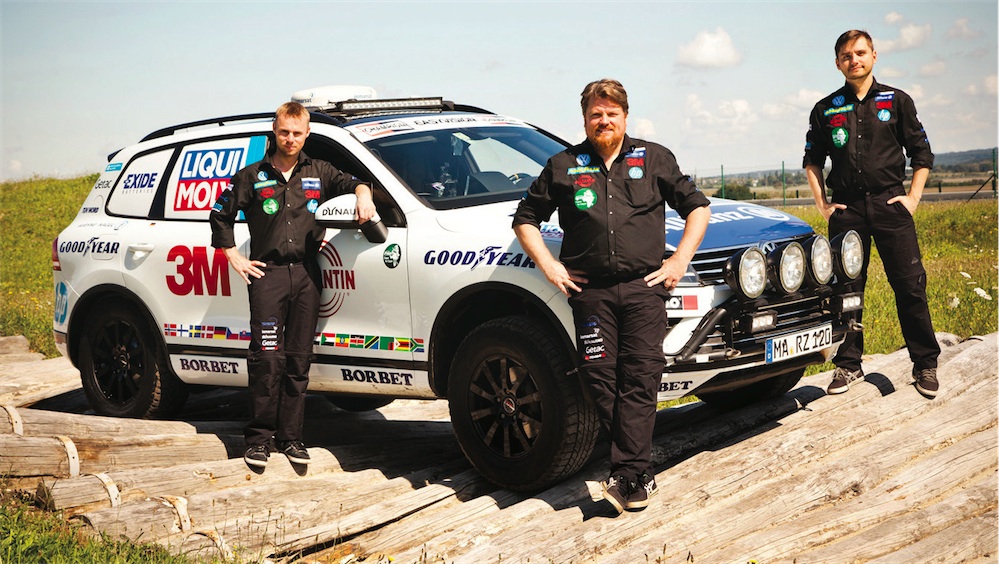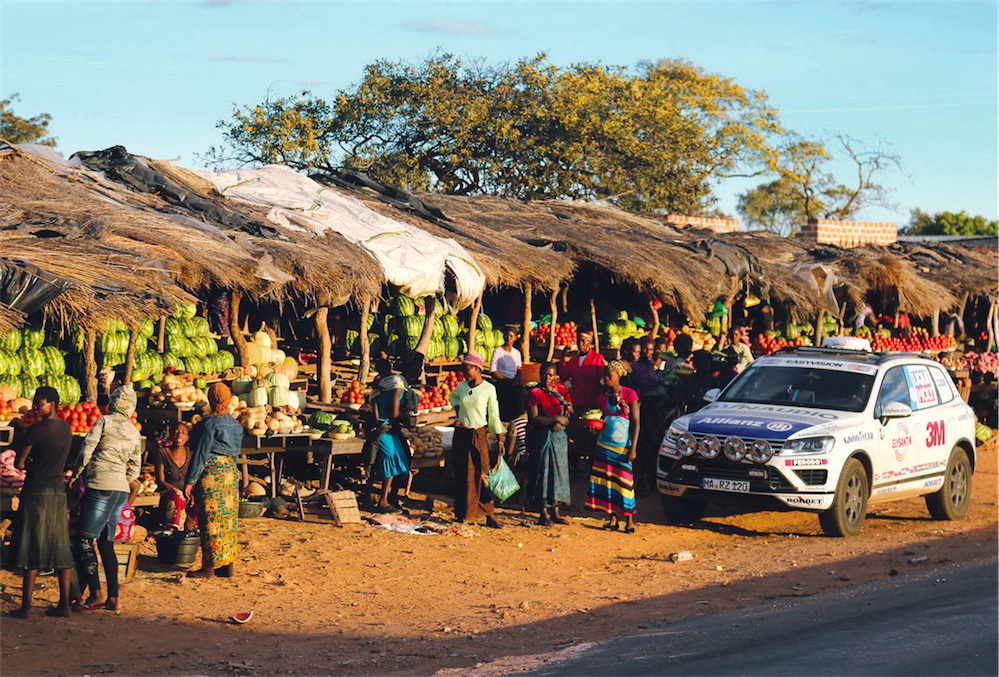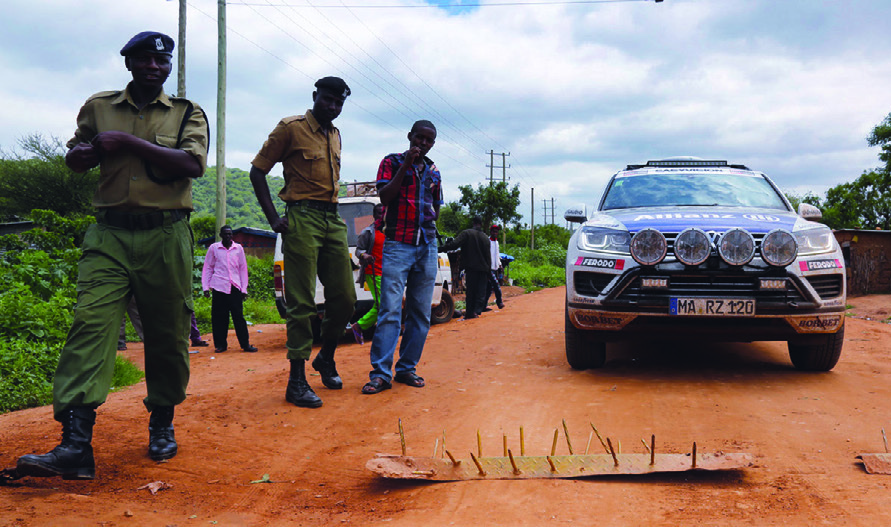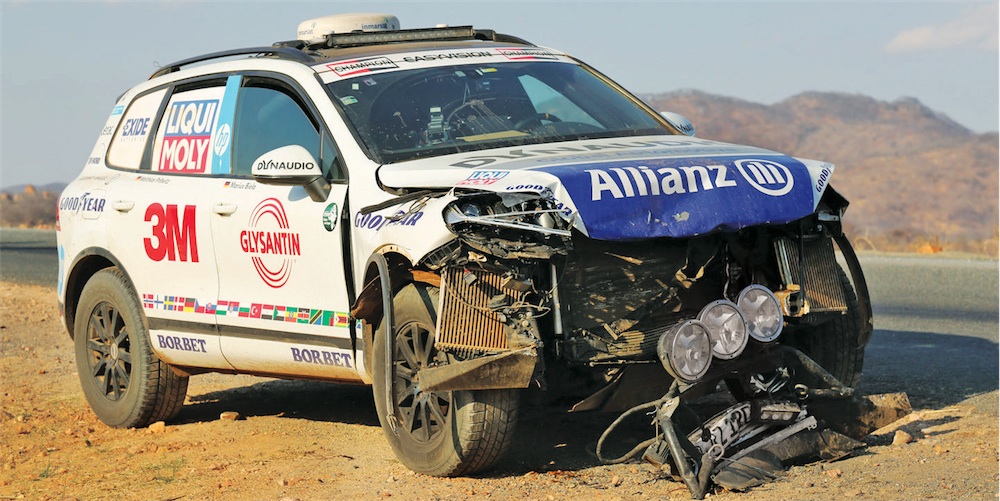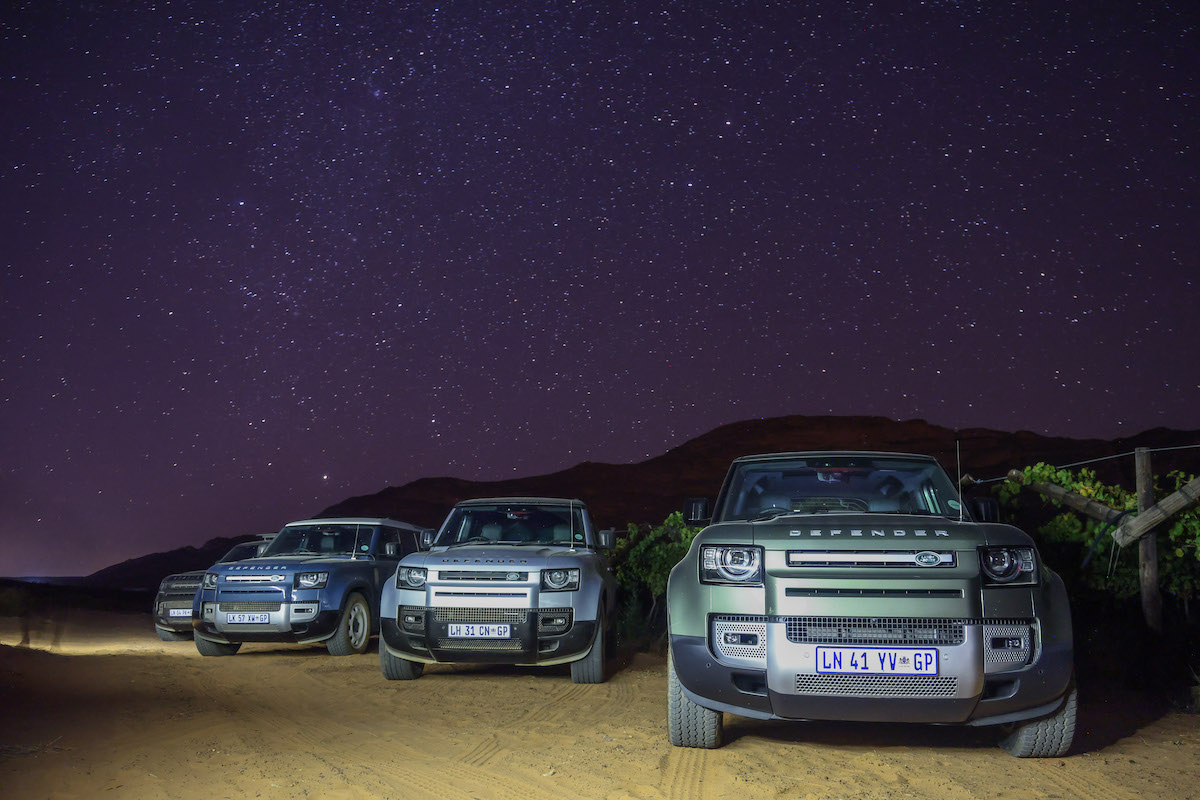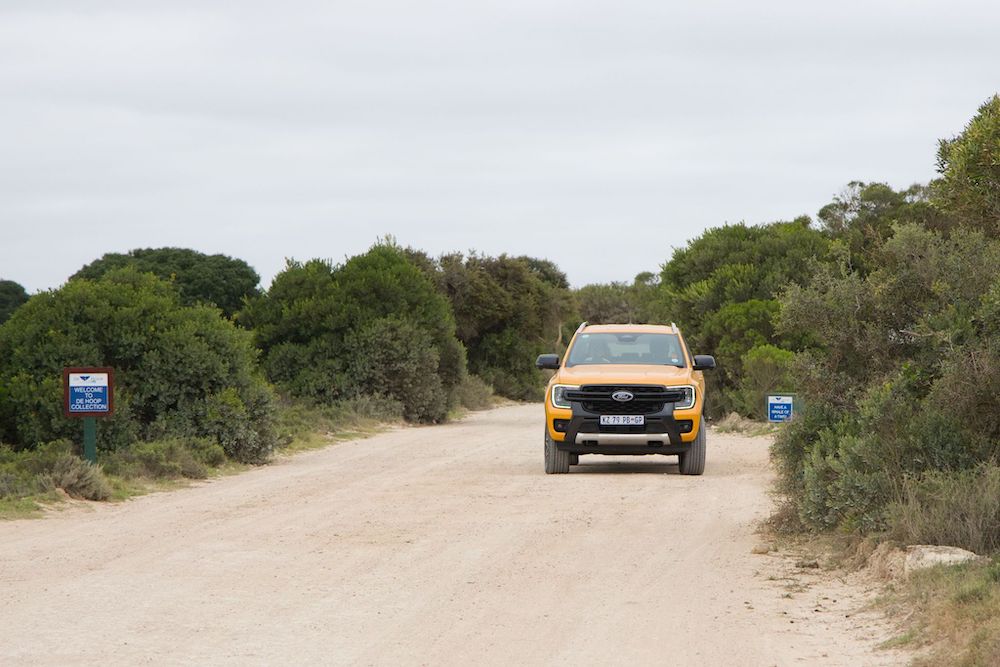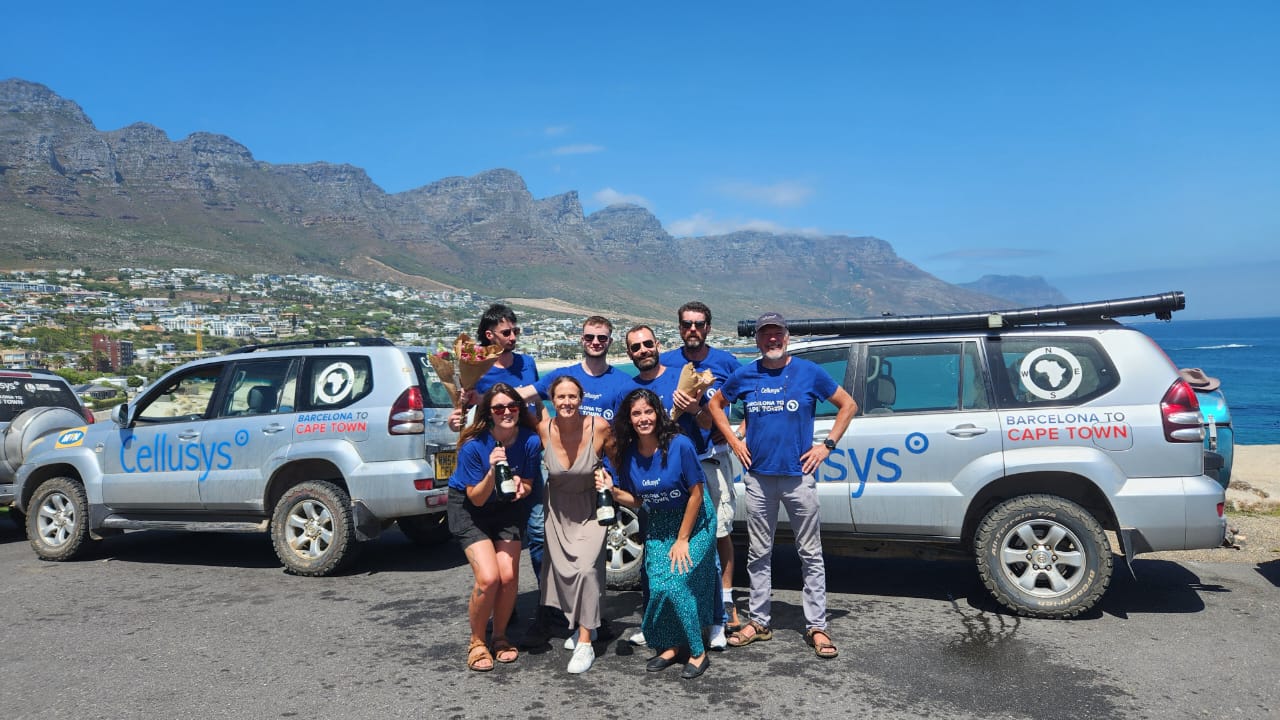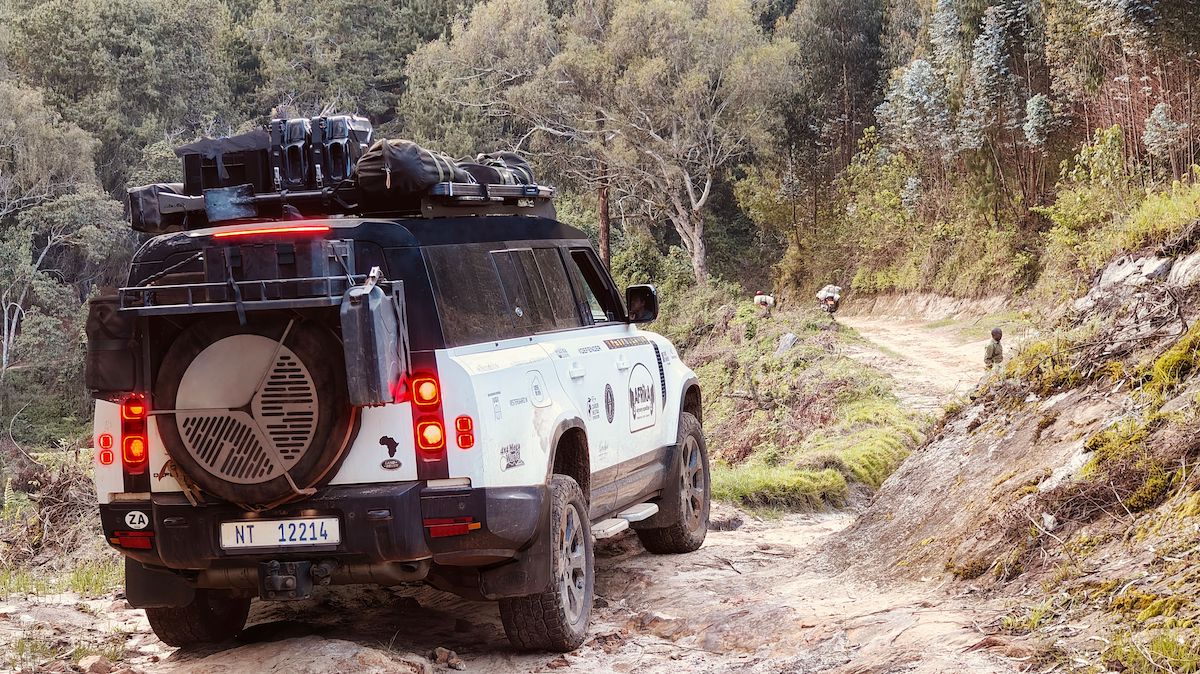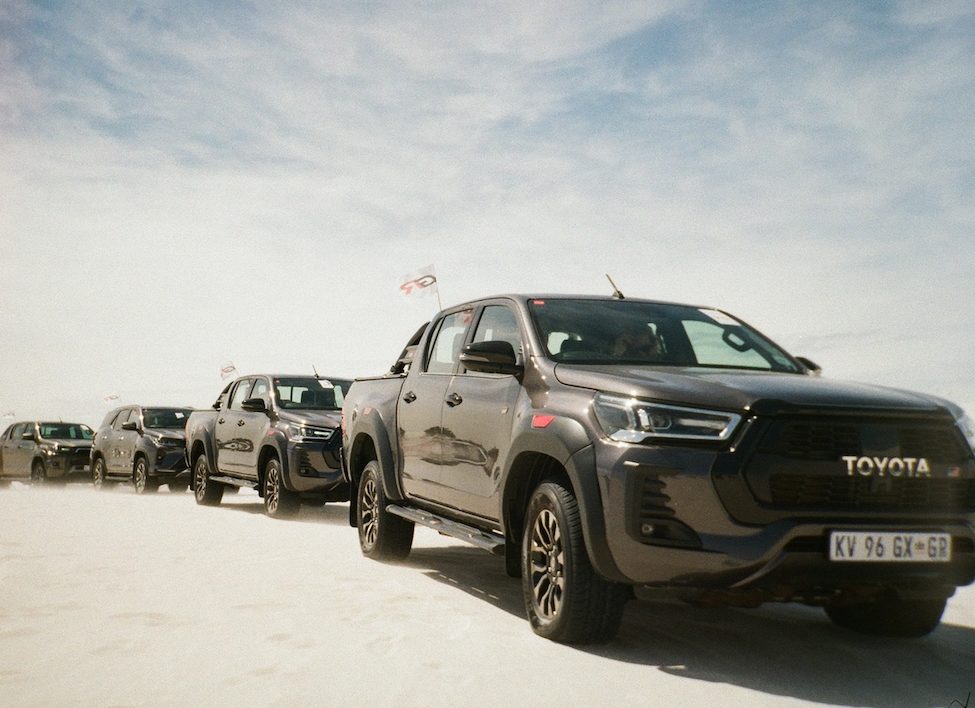Rainer Zietlow is a long distance racer, but his latest record attempt seemed slightly crazy. Could he and his team get from the northernmost point of Europe to the southern tip of Africa in less than ten days?
Text: Gerhard Horn
Photography: Marius Biela
If you have ever seen a copy of the Guinness Book of World Records, you will know that the amount of exposure you get for setting a new mark just isn’t worth the effort.
You spend hundreds of hours preparing your body and mind, eventually (if you’re lucky) you set the record, and all you get in return is a 10cm x 10cm mention in the next edition of Guinness. And that only happens if your record is noteworthy enough to find its way into the pages in the first place.
At the end of the day, it’s just not worth doing 21 back flips while wearing a pair of stilts — which is incidentally the number of flips it took for David Hale to set this odd record in 2011.
To get a half-page or more, you need to do something really special – the kind of thing that makes people wonder whether you actually did it, or if it was all faked on a special sound stage in the middle of the Nevada desert.
Rainer Zietlow knows how to set a record properly. He already holds the record for the fastest time in a car for the Panamericana Challenge, and the record for the fastest drive from Melbourne, Australia, to St Petersburg in Russia.
While both these records sound absolutely mind-blowing, we were more impressed by his latest feat. Zietlow left Nordkapp in Norway on Sunday, 21 September, and aimed his Volkswagen Touareg south. Twenty-one days, 16 hours and 36 seconds later, he arrived at Cape Agulhas in SA. The team beat the previous record, first set in 1984, by more than seven days.
Zietlow’s aim was to complete the journey in less than ten days, but an accident in Tanzania made it impossible to do so, but more about that later…
The car
It should be noted that a record like this has little to do with speed and a lot to do with perseverance and reliability. A decent helping of frugality also goes a long way.
Team Zietlow, which consisted of Rainer, Marius Biela and Matthias Prilwitz, chose the recently facelifted Volkswagen Touareg for the trip. (Our first driving impression of this new model will appear in the next edition of Leisure Wheels.)
You’d think Zietlow would have chosen the top-of-the-line performance model, but instead he went for a mid-level 3,0-litre V6 TDI. This turbocharged V6 diesel engine produces 180kW and a respectable 550Nm of torque. It is mated to an eight-speed gearbox that sends the power to all four wheels.
The Touareg gets to 100km/h in a respectable 7,8 seconds but more importantly, VW claims a fuel consumption figure of just 7,2 l/100km.
It sounds like the perfect boulevard cruiser, so we were expecting Zietlow’s Touareg to have at least a few major modifications to cope with the harsh African landscape. In fact, he made only two modifications. A roll-over cage was added for safety reasons, and long-distance tanks were fitted, giving the vehicle a range of a whopping 3000km.
Most impressive of all, this Touareg is Zietlow’s own car. It wasn’t a sponsored vehicle. Zietlow and his team set out to prove just how tough the car is.
The journey begins
The team set off from Nordkapp on 21 September, and the initial aim was to reach Cape Agulhas in less than ten day. They not only set themselves the goal of a world record, but also a personal record that many believed could not be achieved.
The mayor of Nordkapp, Kristina Hansen, attended the function to start the stopwatch at 3am. The plan was to cross Finland and be in Sweden before the end of the day.
The first obstacle was snow, and by the time they reached Finland there was a fall of 3cm. This did not slow them down too much, however, and they arrived in Stockholm that night. After a quick refuel, they set off on a non-stop drive to Denmark in the hopes of catching an early ferry to Germany. Due to the weather, the team missed the 4.15am ferry, but there was another one 20 minutes later, and they were happy to have what amounted to a 45-minute break. At this point they had been on the road for more than 24 hours, much of it in snow and heavy rain.
Shortly before 9am on 22 September the team arrived at their scheduled fuel stop in Berlin. This gave them time for another short break, as it takes a long time to fill a Touareg with enough fuel for 3 000km!
The plan was to drive to Prague, but Zietlow was wary of the infamous autobahn traffic. Volkswagen Czech were able to help them with an escort through the congestion and soon they were on their way to Bratislava which, incidentally, is the birthplace of the Touareg.
Unbeknown to the team, Volkswagen Slovakia had prepared a surprise for them in Bratislava. Two new Touaregs waited for them at the border, along with the team that had prepared the Touareg they were driving.
After a short break to catch up with the team than had prepared the car and a media interview, the team set off for Budapest, capital of Hungary. They drove straight through the city and then on through Serbia and Bulgaria to the Turkish border.
The third day of this epic road trip was spent in Turkey. Temperatures had changed dramatically, from Arctic conditions at the start in Scandinavia to 21C at 6am in Turkey.
The team battled through heavy traffic in Istanbul, but were soon on their way to Ankara. By the time they reached the south-eastern part of Turkey, they had covered about 1000km with only one 10-minute break.
Next came the flight to Egypt, and while preparing the Touareg for boarding procedures, the team had the first “little” accident. The customs officials checked the boot and, after they had done their search, closed it. Unfortunately, a piece of clothing got stuck in the tailgate’s lock, so it couldn’t be opened again. This little problem meant the team couldn’t even use the short two-hour flight to Egypt to rest. Matthias and the on-board crew tried to get the piece of cloth out of the locking mechanism, but in the end some of the roll-over cage had to be dismantled to get it out.
Egyptian customs officials let them through without any hassles. Team Zietlow had finally arrived in Africa!
The heat is on!
The adventurers struggled through Cairo’s dreadful rush-hour traffic in 30-degree heat, and as the day wore on, the on-board computer’s outside temperature display rose to 43C.
Egypt treated them to the most beautiful sunset they’d experienced so far, but they weren’t planning on staying in the land of the pyramids for much longer. They left Egypt that night at a military checkpoint which was opened especially for them. Due to a power outage, their passports were stamped in candlelight.
The Sudanese welcomed the team with open arms and a banner with the word, “Welcome” on it. Road conditions were very good, which meant the team covered another 1000km by nightfall. By sunrise, Ethiopia was in their sights.
The border crossing took some time, but before long the team were tackling the difficult roads through Ethiopia’s beautiful landscape. The roads took some getting used to, as there didn’t seem to be any clear rules for using them. At least they were quite wide, so the Touareg could slalom its way through the various obstacles.
The tablets being used for navigation had stopped working, which meant the team had to switch to a smartphone and a good old-fashioned map. Addis Ababa was far off, but they hoped to reach it before midnight.
Around 200km from the capital, the team encountered “the hardest night of all.” A massive thunderstorm had washed away part of the road, leaving 70cm of water in its place. The local travellers had parked their cars for a long wait, but Rainer wasn’t willing to sacrifice crucial hours. He got out to inspect the problem, and Marius followed him with a camera. That left Matthias, a professional rally driver, behind the wheel.
In an inspired moment, Matthias made a dash for it, straight through the deep water, and the attempt paid off.
Marius climbed back into the car with a cut foot. The antiseptic in the medicine box had run out, so the wound was sprayed with deodorant!
Rainer, Matthias and Marius were exhausted by the time they reached Addis Ababa at 1am. They took a much-needed break and enjoyed a hot meal provided by the German embassy. But by 2am they were on their way again, with Marius behind the wheel.
The team entered Kenya on the morning of 26 September. Good weather and reasonable road conditions made it possible to get back on schedule, which allowed for a quick break to clean off all the mud that had built up on the Touareg. The locals helped with this task, and soon they were back on track. The corrugated roads shook a fog-light loose, but other than that the Touareg had fared exceptionally well.
Thanks to pre-planning, the team had a quick run through the Kenya/Tanzania border. They arrived in Arusha in peak traffic but the police waved them through the various checkpoints. There was no time to enjoy the local markets and they pressed on for the next fuel stop.
But the best-laid plans often go awry! On 27 September, the world record attempt came to an abrupt halt when the team were involved in an accident. Nobody was hurt, but the Touareg was damaged to the point that it needed major repairs. So by 29 September the team were stuck in Dar es Salaam, while Volkswagen set about repairing the Touareg. There was nothing to do but wait.
Giving up was not an option. Rainer and his team were determined to complete the journey, if only to prove that it could be done.
On 4 October, Germans celebrate their unification, but Zietlow and his team were 10 000km away from home. Fortunately, the ambassador revived their spirits by inviting them to his home to celebrate the occasion. More than 100 people attended, and the group enjoyed the party.
By this time Volkswagen SA had flown an expert to Tanzania to help with repairs to the car. His work turned out to be crucial to the success of the mission, but he gave the team a stern warning. The repairs would see the car through the 4000km to SA, but once it got there, it would need a major service.
By mid-morning on 8 October the team finally had all the parts they needed. The crew and the mechanics worked tirelessly through the day and next morning, at 10.30, the Touareg coughed back into life. Rainer decided on a 4am departure the next day. Their personal record was out of reach, but even after a 12-day delay, they still had a chance of beating the previous record.
The team had to get to Iringa to officially relaunch their start. Local traffic slowed their progress down to a crawl, which meant they only reached their destination at 8.30pm on 10 October. A city councillor started the clock at 8.42pm and the team were on their way to Zambia.
The next 2000km in the rebuilt Touareg flew by without problems, and the car was refuelled in Lusaka at 1pm. Later that day they reached the Zambesi River and the Zimbabwe border.
The last night in Zimbabwe turned out to be an extremely difficult drive, because they were driving in the dark through areas where wild animals regularly wander into the road, but they made it through the border without any problems and arrived in Louis Trichardt on schedule, for another refill.
At 7am, on a sleepy Sunday morning, Team Zietlow arrived in Pretoria. They still had a long way to go, but they had no more border crossings to deal with. Two members of the 4×4 Community Forum escorted them through Johannesburg.
Now it was plain sailing. The tanks had enough fuel and the end destination was around 1000km away – nothing compared to what they had been through.
At 8.42pm on 12 October the team reached Cape Agulhas, the southernmost tip of Africa. A police officer stopped the clock inside the car. It had taken them two days and 51 minutes to get from Iringa in Tanzania to Cape Agulhas.
Rainer Zietlow, Marius Biela and Matthias Prillwitz completed the 17 000km journey in 21 days, six hours and 51 minutes. If you exclude the time spent in Tanzania, the actual travelling took only eight days and 10 hours.
The three adventurers and their Touareg definitely deserve a mention in the next Guinness Book of Records. In fact, they deserve a double-page spread!
